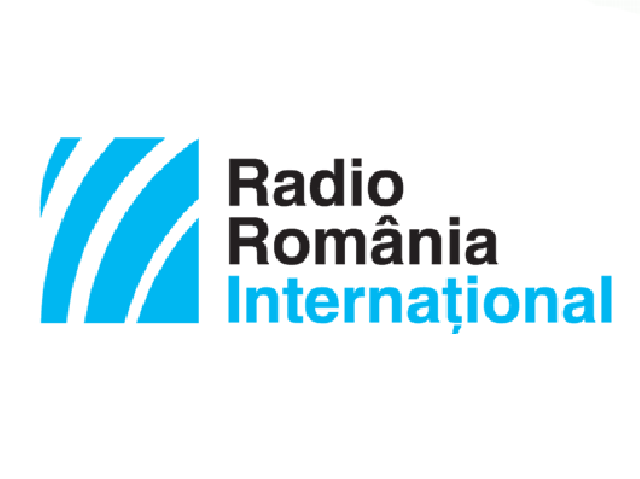The George Severeanu memorial house
The ‘George Severeanu Museum is one of Bucharests most important museums, although less known to the public at large.

Christine Leșcu, 02.07.2016, 12:17
The ‘George Severeanu’ Museum is one of Bucharest’s most important museums, although less known to the public at large. It is one of the institutions included in the Bucharest History Museum. Located in downtown Bucharest, near the Victoria Road and the Romana Square, the house sheltering the museum was the residence of doctor Severeanu, a trailblazer in two very important domains: radiology and numismatics. This house is important not only for its intrinsic value but also for the exhibition it is hosting: a collection of “Maria and George Severanu” antiquities and coins.
Dan Pirvulescu is the head of the history section of the Bucharest City Museum and he will tell us more about the Severeanu family: “Doctor George Severeanu was born on July 26, 1879 into the family of doctor Constantin Severeanu. Ever since his childhood, he showed a passion for collecting coins and historical objects, a passion which his father encouraged. In parallel with this passion, doctor George Severeanu also developed a significant medical career specializing in the field of radiology, being one of the pioneers in this specialization in Romania. He was also a university professor, mentoring an entire generation of doctors in the early 20th century. He was an outstanding personality of the Romanian numismatics and collected, all along his life, more than 11,000 numismatics and archeological objects, among which 9,000 coins. Doctor Severeanu was also involved in the setting up of the Romanian Numismatics Society alongside other personalities of the time. The year 1931 marked another landmark in his career, as he became the first director of the newly set-up museum of the city of Bucharest. His efforts also focused on the creation of a numismatics and medals section within the museum as well as on the publishing of the first magazine of the institution called ‘The Bucharests’. After 1938, George Severeanu took the first steps towards donating his collection to the Bucharest Museum. Shortly after his death, in the same year 1938, the donation documents were finalized by his wife. Maria Severeanu had a critical role in the development of doctor Severeanu’s career. She was the daughter of a boyar, Isaia Lerescu, who bequeathed her the house that is now showcasing the collection of Maria and George Severeanu.”
Thanks to the fortune inherited by his wife, doctor Severeanu was able to enrich his collection along the years. And it was also thanks to her connections that he found the right premises to display this collection.
Here is Dan Pirvulescu again at the microphone: “The building is considered a historical monument at present. It was built in the late 19th century by Take Cioranu who sold it to Isaia Lerescu, father of Maria Severeanu, in 1879. The house is representative for the architecture of Bucharest back in the day, a building characterized by the eclectic style. It has a surface of 379 square meters, with a basement, a ground, a first floor and a large attic. The collection is displayed in seven beautifully adorned halls with chandeliers, wooden ceilings, mirrors, painted windows, stoves and original furniture. There are several sets of crystal doors, which are also very beautiful. An old garage for carriages and several outbuildings are also located on the premises.”
Part of doctor Severeanu’s collection is also displayed around the house. Here is Dan Pirvulescu again: “In 1994, the main collection of George Severeanu’s exhibition as it originally became known to public back in 1956, was removed for safekeeping due to the advanced degradation of the premises. It was only 10 years later that the city hall commenced a programme of refurbishing and consolidating the building, a programme that was completed in 2008. The permanent exhibition of the Severeanu Museum is still closed to the public, but we’ll hopefully open it next year. In the meantime we’ll be staging a couple of exhibitions, which include part of the doctor’s collection. At present, based on an agreement with the Archeology Institute of the Romanian Academy, we have staged a temporary exhibition with archeological artifacts from the Maria and George Severeanu collection as well as a large number of ancient coins. The doctor’s collection is one of the largest in the country and includes ancient Greek vases, Tanagra figurines, bronze artifacts, Roman glassware, jewels and ceramics belonging to the ancient cultures of Cucuteni, Vidastra, Wittemberg and Boian, purchased by Severeanu in Romania, Bulgaria, Greece and Italy.”
The numismatic collection — a very spectacular collection– comprises coins from the ancient Greece, from Getae-Dacia, from Rome, Byzantium, from the Celtic world, coins issued in the Romanian principalities in the Middle Ages as well as coins from the modern period of history.






























